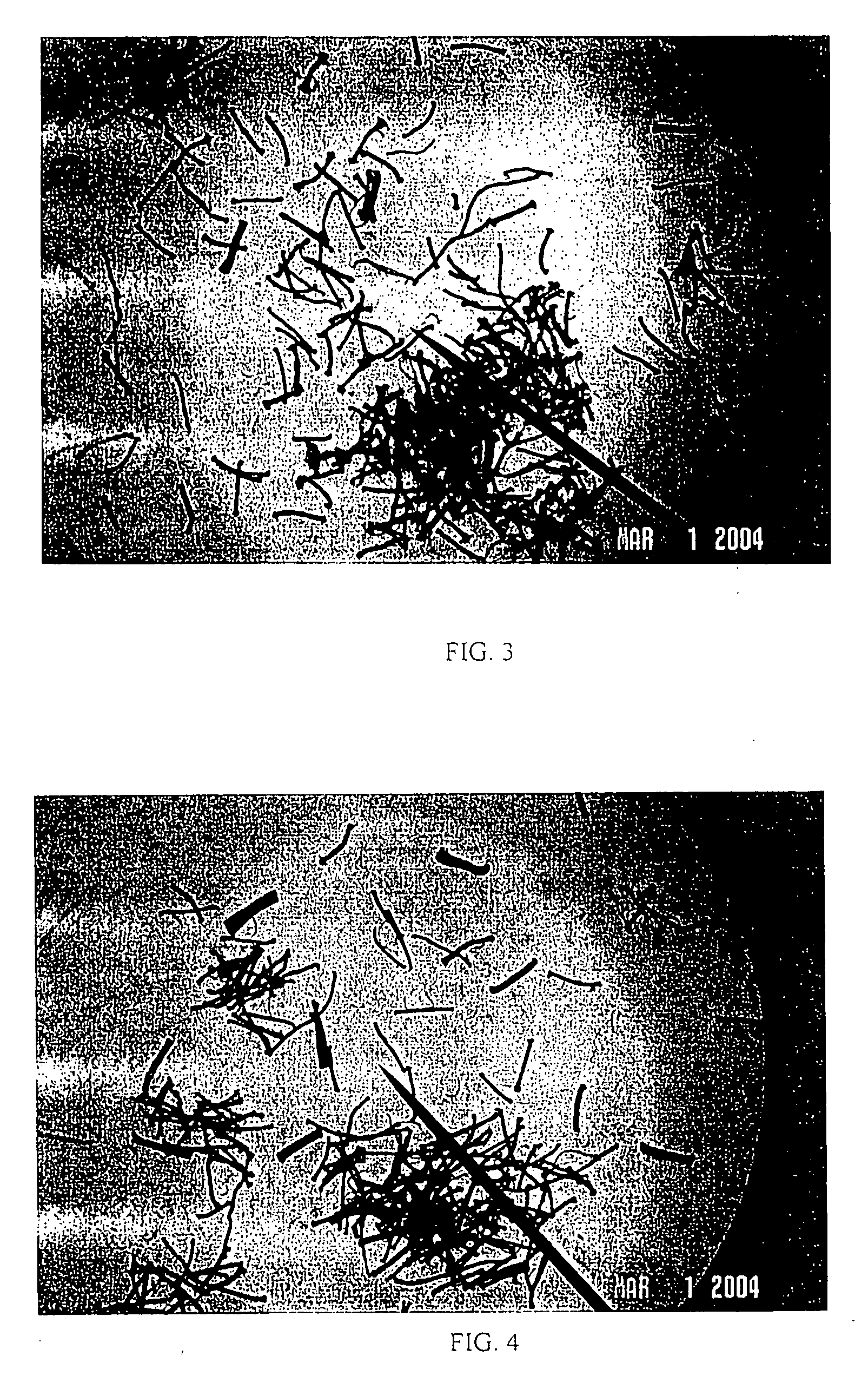Fiber having increased filament separation and method of making same
a technology of fiber and filament, applied in the field of new fiber, can solve the problems of unrealized flock, achieve the effect of increasing the surface area of an amount, increasing the anchoring strength of flock or staple within a part, and increasing the filament separation
- Summary
- Abstract
- Description
- Claims
- Application Information
AI Technical Summary
Benefits of technology
Problems solved by technology
Method used
Image
Examples
example 1
[0049] The dispersion disk and classifier were set to rotate at 6,000 rpm and 2,800 rpm, respectively. The temperature of the room was 60° F. The pressure differential generated by the fan between the fan and the APCM was 15 atm, i.e., −7 atm in the APCM and −22 atm at the fan. As depicted in FIG. 2, the milled flock exhibited an increased degree of filament separation over the un-milled flock depicted in FIG. 1. However, the flock included many fibrils giving the flock fibers a frayed or torn appearance. Additionally, a number of the fibers exhibited frayed ends giving the fibrils a bulbous or pom-pom shaped ends.
example 2
[0050] The dispersion disk and classifier were set to rotate at 6,000 rpm and 2,500 rpm, respectively. The temperature of the room was 60° F. The pressure differential generated by the fan between the fan and the APCM was 15 atm, i.e., −7 atm in the APCM and −22 atm at the fan. As depicted in FIG. 3, the milled flock exhibited an increased degree of filament separation over the un-milled flock depicted in FIG. 1. Like in Example 1, the milled flock included many fibrils, and many of the flock fibers were torn or frayed, giving the fibers a fuzzy appearance and pom-pom shaped ends.
example 3
[0051] The dispersion disk and classifier were set to rotate at 5,000 rpm and 2,000 rpm, respectively. The temperature of the room was 60° F. The pressure differential generated by the fan between the fan and the APCM was 15 atm, i.e., −7 atm in the APCM and −22 atm at the fan. As depicted in FIG. 4, the milled flock exhibited an increased degree of filament separation over the un-milled flock depicted in FIG. 1 but not as much separation as found in Examples 1 and 2. Thus multifilament pieces were seen, primarily double filament pieces. Though some fibrils were apparent, as some of the fibers were torn or frayed, less were torn or frayed than were seen in Examples 1 and 2.
PUM
| Property | Measurement | Unit |
|---|---|---|
| diameter | aaaaa | aaaaa |
| diameter | aaaaa | aaaaa |
| length | aaaaa | aaaaa |
Abstract
Description
Claims
Application Information
 Login to View More
Login to View More - R&D
- Intellectual Property
- Life Sciences
- Materials
- Tech Scout
- Unparalleled Data Quality
- Higher Quality Content
- 60% Fewer Hallucinations
Browse by: Latest US Patents, China's latest patents, Technical Efficacy Thesaurus, Application Domain, Technology Topic, Popular Technical Reports.
© 2025 PatSnap. All rights reserved.Legal|Privacy policy|Modern Slavery Act Transparency Statement|Sitemap|About US| Contact US: help@patsnap.com



